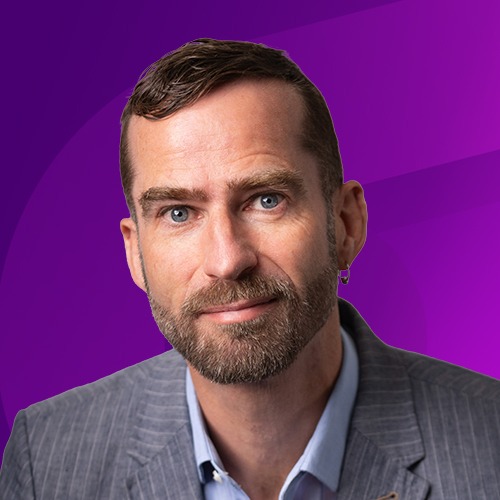Some leaders run toward disruption – not for the adrenaline, but for the opportunity to make things better. Ashley Goosman is one of those leaders. With frontline experience from 9/11 to Hurricane Katrina and a strategic role at Allstate today, she brings a rare blend of crisis-tested instinct and enterprise foresight.
In this edition of Gamechangers in Resilience, Ashley shares her journey from boots-on-the-ground emergency response to boardroom-level resilience, offering wisdom on navigating complexity, breaking down silos, and building resilience into the DNA of how we work.
Q: How did you get your start in resilience?
Ashley: Resilience wasn’t a role I applied for – it was a calling born out of experience. I came into this space through crisis management and disaster recovery in the public sector, boots-on-the-ground emergency response, in the thick of major disruptions like 9/11 and Hurricane Katrina. Over time, I realized the real opportunity wasn’t just managing emergencies – it was helping organizations bounce back stronger. That shift from reactive to strategic is what keeps me engaged in resilience today.
Q: What is it about your background that prepared you to navigate this environment of endless disruption?
Ashley: I’ve worked in complex, high-stakes environments where the only constant was change. That taught me how to lead through uncertainty with clarity and calm. I’m grounded in crisis leadership but have cross-functional experience in risk, business continuity, and operational resilience – so I understand how interconnected everything is. I also have a growing interest in Enterprise and Organizational Resilience from a strategic perspective. That perspective is essential when disruptions hit from multiple fronts.
Q: What are three values that define your leadership style?
Ashley:
Clarity in chaos – In a crisis, people don’t need perfect answers—they need direction.
Integrity under pressure – I’ll always advocate for what’s right, even when it’s not easy. Especially then.
Collaboration over control – True resilience is never built alone. I believe in co-creating solutions across teams and disciplines.
Q: The core of resilience is helping organizations manage change. What are your go-to strategies to guide your team through transformative times?
Ashley: I start by anchoring the crisis team for a shared purpose. Then I make space for honest dialogue – about what’s hard, what’s uncertain, and what we’re building toward. I emphasize small, actionable wins that create momentum. Change isn’t linear, so I coach my team to expect setbacks and stay adaptive. It requires deep organizational insight, alignment with key stakeholders, a balance of soft and hard skills – and above all, the agility to adapt in real time. Ultimately, it’s about partnering across cross-functional teams at every level to embed resilience and strengthen the crisis response framework.
Q: One of the more difficult aspects of resilience can be “breaking down the silos.” What do you think about the challenge of having pragmatic discussions about technology, strategy, risk, and resilience?
Ashley: It’s one of our biggest opportunities. We can’t afford to keep resilience in a vacuum – it has to be embedded into the DNA of how we work. That means speaking the language of the business, translating risk into strategic impact, and showing up at the tables where decisions are made. Silos are symptoms of misaligned incentives, not personalities. The real work is getting people to see that resilience is a lever for performance, not just protection.
Q: Technology these days is non-optional. What are some of the most important considerations when selecting technology to support your organizational objectives?
Ashley: I look for tech that enables – not overwhelms – resilience. It has to be intuitive, scalable, and integrated with how teams already work. But beyond features, I look at the vendor’s vision: Do they understand resilience as a strategic function? Are they solving tomorrow’s problems, not just today’s pain points? Tech should amplify human decision-making, not replace it.
Q: How would you complete this sentence, “The hardest part of leadership is…”?
Ashley: …letting go of control and trusting others to lead. It’s tempting to try to own every decision in high-pressure environments. But resilience leadership is about building capacity in others – and that means stepping back so others can step up.
It also means navigating and adapting to hierarchical systems. Every organization has its own culture and decision-making structure, and effective crisis response respects that. Success requires setting ego aside, empowering others, and aligning with the established chain of command. While I draw on principles of the Incident Command System (ICS), my goal isn’t to replace existing processes – but to enhance and operationalize them under pressure. I know I’ve done my job well when leadership is confident, aligned, and understands that crisis response isn’t business as usual—it’s high-stakes, time-sensitive, and demands a distinctly different mindset.
Q: What top-of-mind issues are on the horizon for you?
Ashley: AI risk governance, operational resilience, and cyber-physical convergence are at the forefront. But just as important is the human element: burnout, psychological safety, and the erosion of trust across institutions. Resilience is no longer just technical – it’s deeply human.
Q: How do you define success?
Ashley: Success is when resilience is invisible – because it’s embedded in how we operate. It shows up in how quickly we adapt, how well we communicate, and how aligned we stay through volatility. If our people feel supported and our business moves forward and customers feel supported even in disruption, that’s success.
Q: What is the leadership playbook you are writing in real time?
Ashley: It’s one built on agility, accountability, and authenticity. We’re writing it together, every time we navigate the unknown and choose clarity over chaos. I’m honored to be part of building a culture where resilience isn’t a department – it’s a shared mindset.














